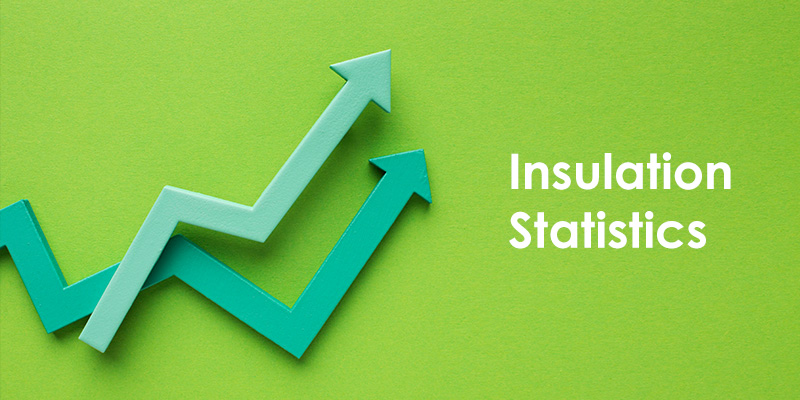
Key Insulation Statistics – Dwellings in England
Insulation has become a focal part of most homeowner’s objectives not only because of the money you can save on your energy bills but, importantly, because of the benefits on the environment. With sufficient home insulation you are effectively reducing your energy consumption and, therefore, releasing less emissions.
Some key areas of insulation are, walls (both cavity and solid walls), roofs, floors, doors and windows. Different areas of insulation have their own costs, turnaround time and effectiveness, with some being easier to carry out than others. For example, window insulation, simply having double-glazing installed, is one of the simpler methods that homeowners can invest in to better insulate their homes. We can analyse some key data from 2008-2020 that reflects some major insulation increases across dwellings in England.
Important Insulation Areas
Double Glazing Windows
- In 2008, 70.8% of dwellings in England had full double glazing. This figure is one of the highest starting points for insulation.
- By 2020, this number rose to 86.7% of dwellings that have double glazing.
Cavity Wall or Solid Wall Insulation
- In 2008 only 37.7% of homes had either cavity wall or external solid wall insulation.
- By 2020, this figured increased to 48.9% of homes. Showing almost half chose to invest in an external wall insulation service.
Loft Insulation
It is important to note that loft insulation was had the lowest starting point in 2008 in comparison to the above areas of insulation, however, it also saw the biggest increases by 2020.
- In 2008, only 21.1% of dwellings invested in a form of loft insulation.
- Whereas, by 2020, this figure almost doubled, with 39.3% of dwellings now have loft insulation.
These figures indicate properties that have 200mm or more of loft insulation. Additionally, to note, in 2020, there were around 24 million housed in England.
Cavity Wall Insulation
At the start of 2020, it was estimated that in the UK, 70% of homes with a cavity wall had invested in cavity wall insulation, which accounted for around 14.1 million properties.
UKs Net Zero Objectives
The UK has announced a legally binding target to reduce the carbon emission by 100% by 2050, from the 1990 levels. Known as the net zero target, this initiative will help Britain become a lot more sustainable and to achieve this, reducing the energy consumption in homes plays a major role.
- Around 14% of greenhouse gas emissions stems directly from household energy consumption.
- 63% of home energy consumption is for heating living areas.
Therefore, by investing in home insulation and reducing the need for home energy consumption to heat up properties, Britain can greatly reduce their carbon emissions.
Why do People Refrain from Home Insulation?
There are a few key reasons why homeowners lean against getting their properties insulated, for example:
- Only long-term results
- Hassle and effort of retrofit works
- Fear of the energy efficiency investment not reflecting in price increases on the home
- High upfront costs
- Agreement issues between landlords and tenants
Acquiring significant and effective insulation can be difficult for households, especially those that are in fuel poverty, therefore, the government need and have planned to take action in helping homes across Britain tackle these financial issues.
Schemes such as ECO3, Energy Company Obligation, aim to help homeowners better insulate their properties for free, targeting those in lower-income households and in fuel poverty.


